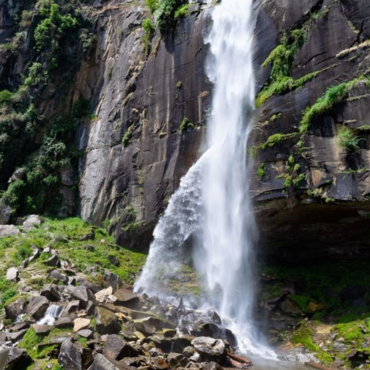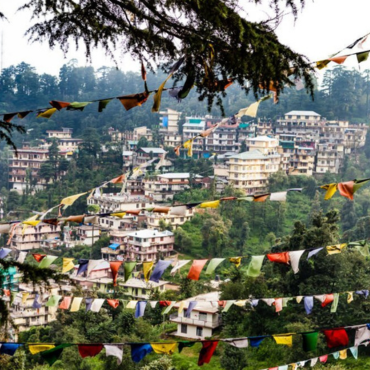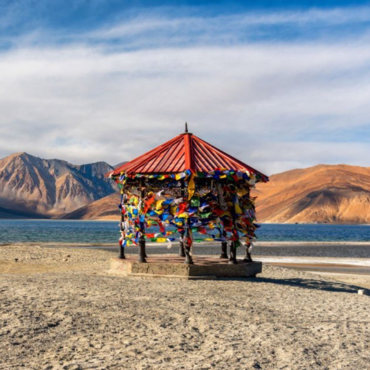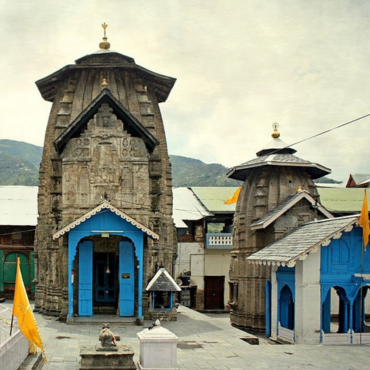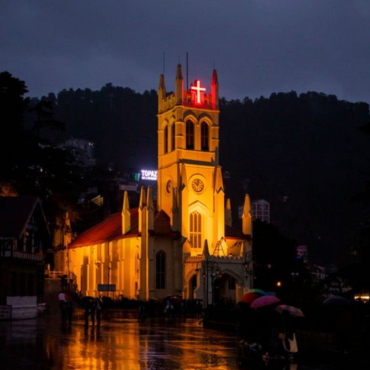Exploring Himachal Pradesh: A Guide to Shimla, Manali, Dharamshala & Beyond
A relaxed travel guide to the best places in Himachal Pradesh
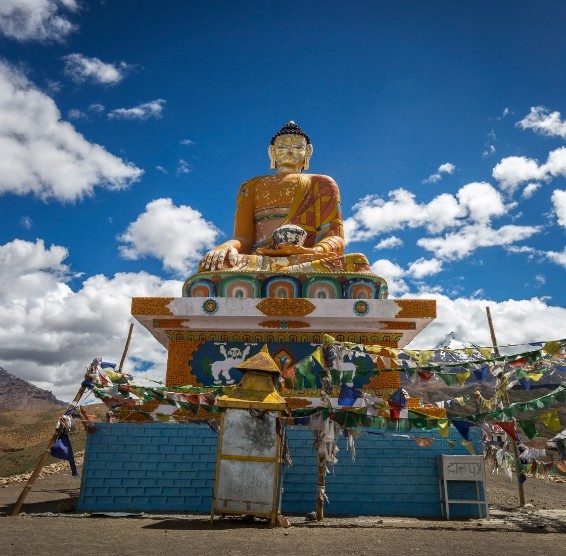
Himachal - The Land of Gods
Imagine waking up in a misty valley in the Himalayas, breathing in the cool mountain air, and hearing temple bells ringing in the distance. Himachal Pradesh, also known as the "Land of Gods," is a paradise for people who love nature and adventure. This northern Indian state has everything from pine-covered hill towns to deserts at high altitudes. It welcomes visitors with open arms and leaves them with memories that will last a lifetime. Himachal is so beautiful that you can't help but enjoy a sunrise over snow-capped peaks or a village festival.
Location & Geography of Himachal, Himachal Pradesh is a state in the Western Himalayas that is mostly mountains and covers about 55,000 square kilometers. It is located between 30°22′N and 33°12′N latitude and 75°47′E and 79°04′E longitude. It goes from the lower foothills to glaciers and peaks that are over 6,000 m high. The state is bounded by Jammu and Kashmir to the north, Tibet to the east, Uttarakhand to the southeast, Haryana and Punjab to the south, and Ladakh to the northwest. Its landscape is very different, with green pine forests and apple orchards in the lower valleys and barren highlands in Lahaul, Spiti, and Ladakh. Because of this dramatic geography, travelers can see everything from the pleasant Shimla to the cold deserts of Spiti in one trip.
Best Time to Visit in Himchal
Himachal is a place to visit all year round, but when you go depends on what you want. Most hill stations are busiest in the summer, from March to June. The weather is nice and cool (15–30°C), which is great for outdoor activities like hiking, paragliding, and camping. Shimla, Manali, Dharamshala, and Dalhousie are some of the towns that come to life with wildflowers and waterfalls at their best. The monsoon (July to September) turns Himachal emerald green. Heavy rains feed forests and fill rivers, making valleys and lowland treks look amazing. Some routes may have landslides or roadblocks, and high-altitude passes may close. Offbeat travelers will like this time of year because there are fewer people and the scenery is beautiful. The weather is clear and cool in the fall (October to November). The colors of fall start to show in the lower forests, and you can see distant peaks very well. This time of year is great for hiking and taking pictures because there aren't many people around and there isn't much snow. In the winter (December to February), Himachal becomes a snowy wonderland. In the mountains, the temperature can drop below freezing. Hill resorts like Manali, Kufri, and Auli (just over the border from Uttarakhand) have skiing and other snow sports. The International Himalayan Winter Festival and other colorful fairs make the cold months feel warmer. Winter has a magical, quiet beauty, even if you don't chase snowflakes.
Top Destinations & Highlights
- Shimla – The Queen of Hills: Shimla, the state capital at 2,200 meters, is charming because of its colonial history and views of the mountains. Walk along the Ridge and Mall Road, which are lined with old buildings and busy shops. Ride the Kalka–Shimla toy train, which is on the UNESCO World Heritage List, through pine forests. Jakhu's Hanuman Temple and Christ Church are two examples of ancient temples and churches that are worth seeing. On clear days, you can see the snow-capped peaks of the Himalayas from scenic viewpoints. Shimla is a great first stop in Himachal because it has a friendly vibe and walks along the hills.
- Kullu & Manali – Valley of Adventure: The Beas River flows through the Kullu Valley, which is south of Shimla. Kullu is known for its beautiful shawls and the Dussehra fair that happens every year. Manali, which is close by (2,050 m), is a popular place for families and backpackers. It combines the beauty of the Alps with cultural heritage. There are nature trails that go to waterfalls and the beautiful village of Vashisht, which has natural hot springs. Solang Valley, which is only 14 km from Manali, is a great place for skiing, paragliding, zorbing, and zorbing—exciting family fun with stunning views of snowy peaks. The Hidimba Devi Temple in Manali's cedar forest is a one-of-a-kind pagoda-style shrine from the 16th century.
- Dharamshala & McLeod Ganj – Tibetan Heartland: Dharamshala (1,457 m) is a beautiful and spiritual place in the Kangra Valley. "Upper Dharamshala," or McLeod Ganj, is well-known for being the home of the Dalai Lama and the Tibetan government-in-exile. You can see prayer halls, monks in maroon robes, and colorful Tibetan markets here. The Tsuglagkhang Complex (Dalai Lama Temple) is a peace symbol that attracts both pilgrims and people who want to learn more. Triund Hill is a popular 6-kilometer hike just outside of town that offers great views of the Dhauladhar range, which is often called the "jewel of Dharamsala." Lower Dharamshala and the villages around it have their own temples and forts. The Kangra Fort is the biggest fort in the Himalayas.
- Dalhousie & Khajjiar – Colonial Charm: Dalhousie, an old British-era hill station on five hills, is 2,036 meters west of Dharamshala. The pine and deodar forests and colonial buildings like St. John's Church remind us of a time long ago. The town overlooks the bending Ravi River below. The natural springs and the memorial to freedom fighters in Panchpula are must-sees. Bears, ghorals, and pheasants live in the nearby Kalatop Wildlife Sanctuary. Khajjiar, which is often called "Mini Switzerland," is a wide meadow with a lake in the middle and conifers all around it. The peaceful green lawn and 12th-century Khajji Nag temple in Khajjiar are great places for picnics and horseback riding. When it snows in the winter, Khajjiar turns white.
- Kinnaur & Spiti – High Himalaya Wilderness: These remote eastern districts have harsh landscapes and native culture. Kinnaur Valley (Reckong Peo, Kalpa) is called the "Valley of Gods" because it has apple orchards next to the holy Kinner Kailash peaks. The village of Kalpa (2,800 m) has amazing views of the Kinner Kailash, which is covered in snow. Its small temples and monasteries combine Hindu and Buddhist practices. In the spring, fields of apple blossoms and green barley bloom under the rough soil. Kinnauri festivals and traditional clothing (like Fulaich) are still very popular.
- Leh-Ladakh – Trans-Himalayan Plateau: Even though Ladakh is now its own union territory, many tourists still connect it with tours of Himachal. Leh (3,500 m) is a prehistoric trade crossroads surrounded by rough peaks. Its winding markets sell prayer flags and pashmina. There are famous gompas all over the area, like Hemis (the biggest in Ladakh, with a colorful festival every year) and Alchi (an 11th-century monastery with frescoes in the Kashmiri style). If you drive north over the Khardung La pass, you'll see the strange sand dunes of Nubra Valley, which is home to double-humped Bactrian camels, and the Buddhist village of Turtuk. Pangong Tso, the crystal-blue lake that looks like it changes color with the sky, is to the east. Tibetan Buddhism and old Himalayan customs make up the culture of Ladakh. Leh-Ladakh is best visited from June to September, when there is no monsoon and it is very dry.
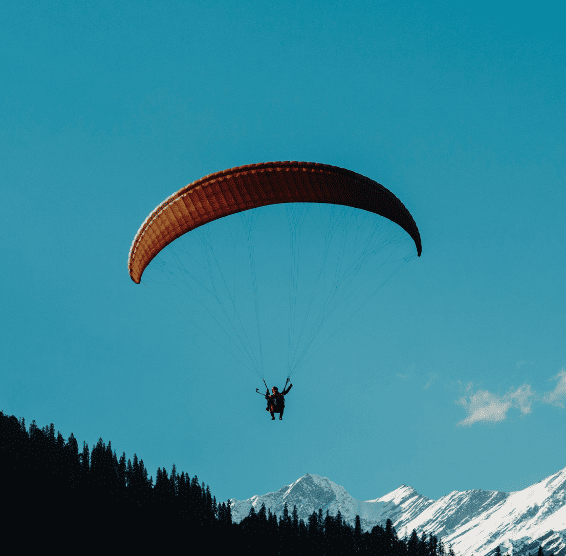
Adventure & Activities
- Trekking: There are trails of all levels that go through the mountains. Triund (near Dharamshala), Pin Parvati Pass (from Kullu to Spiti), Hampta Pass (from Manali to Lahaul), Bijli Mahadev trek (kullu), Jogini waterfall trek (Manali) and Beas Kund (at the base of Rohtang Pass) are all popular treks. You might see snow leopards or Himalayan bears on wildlife treks in the Great Himalayan National Park.
- Paragliding and other aerial sports: Bir Billing in Kangra is one of the best places in the world to go paragliding. People also go paragliding and skiing in the summer in Solang Valley (Manali) also in Kullu Dhobi you can enjoy paragliding. Many resorts have fun things to do like zorbing (rolling around in a big clear ball) and zip-lining.
- River Rafting and Fishing: The Beas River runs through Kullu and Manali and has graded rapids for rafting in the summer. People who fish come from all over to the streams in Kullu that are full of trout. (For safety, always go with a licensed outfitter.) Kullu rafiting is very popular among youth.
- Skiing and Snow Sports: Kufri, Narkanda (near Shimla), and Solang Valley all turn into ski fields in the winter. Ice skating on frozen lakes is available at clubs in Shimla and Manali. There are beginner slopes and instructors that are good for families, even if you're not a pro.
- Camping and mountain biking: People like to camp under the stars in the quiet parts of Parvati Valley, Spiti, and Kinnaur. Mountain biking routes, like the Manali-Leh highway or the Shimla-Spiti road, draw bikers and cyclists looking for rough fun.
- Festivals and cultural walks: Adventure can be cultural too. If you go to the Kullu Dussehra celebrations or a village fair, you'll find dancing, bonfires, and communal meals. Heritage walks in Shimla or McleodGanj show you the history of the British or the Tibetans. Chamba Minjar mela & Rampur Lavi festival is very very famous too must experiene fests in Himachal once.
Culture, People & Festivals of Himachal Pradesh
The people of Himachal are as friendly as the scenery. About 96% of the people are Hindu, and tribal groups like the Gaddis, Kinnauras, Lahaulis, and Gujjars add a lot of variety. Many villagers in the higher valleys (Lahaul-Spiti, Kinnaur) practice Tibetan Buddhism and still follow their old ways. Folk traditions are still strong in the state. People wear colorful woolen caps and shawls, and homes have roofs made of wood and slate that are good for winter snows.
Women take care of terraced fields of grains and fruits, and men often herd sheep in the summer. The region is known as "Dev Bhoomi" (Land of Gods) because every village has at least one temple or shrine. Festivals are the most important part of Himachali culture. In October, Kullu Dussehra draws crowds for a big party to celebrate Rama's victory. There are parades of gods on fancy floats. In the spring, mountain towns celebrate Losar (the Tibetan New Year) and Mandi has the Shivratri Fair with traditional dances and rituals. The Minjar Fair (in Chamba), the Mani Mahesh Yatra (in honor of Lord Shiva), and the Ladarcha horse festival in Spiti are some other one-of-a-kind fairs. People wear embroidered cholas and bright caps and dance the Nati and other folk dances late into the night at these events.
In the spring, you can see rice fields with apple trees in bloom below the Kinner Kailash peaks. These kinds of landscapes are important to local life because Himachalis depend on the fruit, dairy, and grains that grow on their land. They often celebrate the seasonal harvests with communal meals. People know the state for its handicrafts. Kullu is known for its handwoven shawls, Kangra for its paintings, and each district has its own specialty, such as leather goods, wood carvings, or metalware.
Tips for First-Time Visitors
- Permits and paperwork: If you want to go to protected areas like Spiti, Kinnaur, or any border area, make sure you know what permits you need ahead of time. People from India need special Inner Line Permits to go to some places, and people from other countries need restricted area permits to go to Spiti. In the hills, you should always have your ID with you.
- Getting around: Public buses run regularly between big towns, and local taxis or shared jeeps take people to small villages. Note that rail connections are limited (toy trains operate in Shimla/Kalka), so most long-distance travel is by road or air. Delhi has flights to both Kullu (Bhuntar) and Kangra (Dharamshala), which are the closest airports. Hire a taxi or a bus from there.
- Road Conditions: The roads in the Himalayas are winding and often only have one lane. Driving at night is dangerous because of wildlife crossings, landslides, and sharp turns. Always leave early, bring an emergency kit, and fill up whenever you can (there aren't many gas stations). Bring a raincoat and extra, during the monsoon.
- Money and Connectivity: A lot of mountain villages don't have good cell phone service and no ATMs. Bring enough cash (in rupees) for fares, shopping, and emergencies. Put cash in more than one wallet for safety. Get offline maps and information about places to stay ahead of time.
- Health and Altitude: On the first day at high altitude, drink a lot of water and take it easy. If you're going to Spiti, Leh, or doing high treks, be careful of altitude sickness. Talk to your doctor before taking Diamox (acetazolamide). Pack basic medicines for colds, fevers, and stomach problems.
- Clothing: Layered clothing is key. Nights can be cool even in the summer. A jacket that is waterproof is useful all year long. You need good hiking shoes (or boots) to walk on trails. Bring sunscreen, sunglasses, and a warm hat because the sun, wind, and snow can be harsh.
- Respect the local culture: In villages, dress modestly. Before taking pictures of people, ask them first. Learn a few ways to say hello in Hindi or the local dialect (Himachali languages change from district to district). When you go into a temple or a home, take off your shoes. People don't like it when you litter, so take your trash with you.
- Be flexible and positive: Weather and roadblocks can change plans. Enjoy the slow pace of life in the Himalayas. People in the area are friendly and welcoming, but be patient in small shops or rural areas. A smile and a "namaste" can help you connect with others.
Himachal Pradesh is a world of its own, with tall mountains, old cultures, and warm stories about people. The experience will move you, whether you're watching the sun rise from Shimla's Ridge, eating a home-cooked meal in a Spitian homestay, or paragliding over Kullu Valley. "The colors of the setting sun playing on the snow-capped peaks..." are just amazing. So get your bags ready, tie your boots, and let Mystical Himachal handle the rest. Every winding road leads to an adventure, and every smiling village welcomes you with open arms. You won't just see a place in Himachal- you'll feel like you're part of it. Start your journey and let these hills fill your mind with magic.




